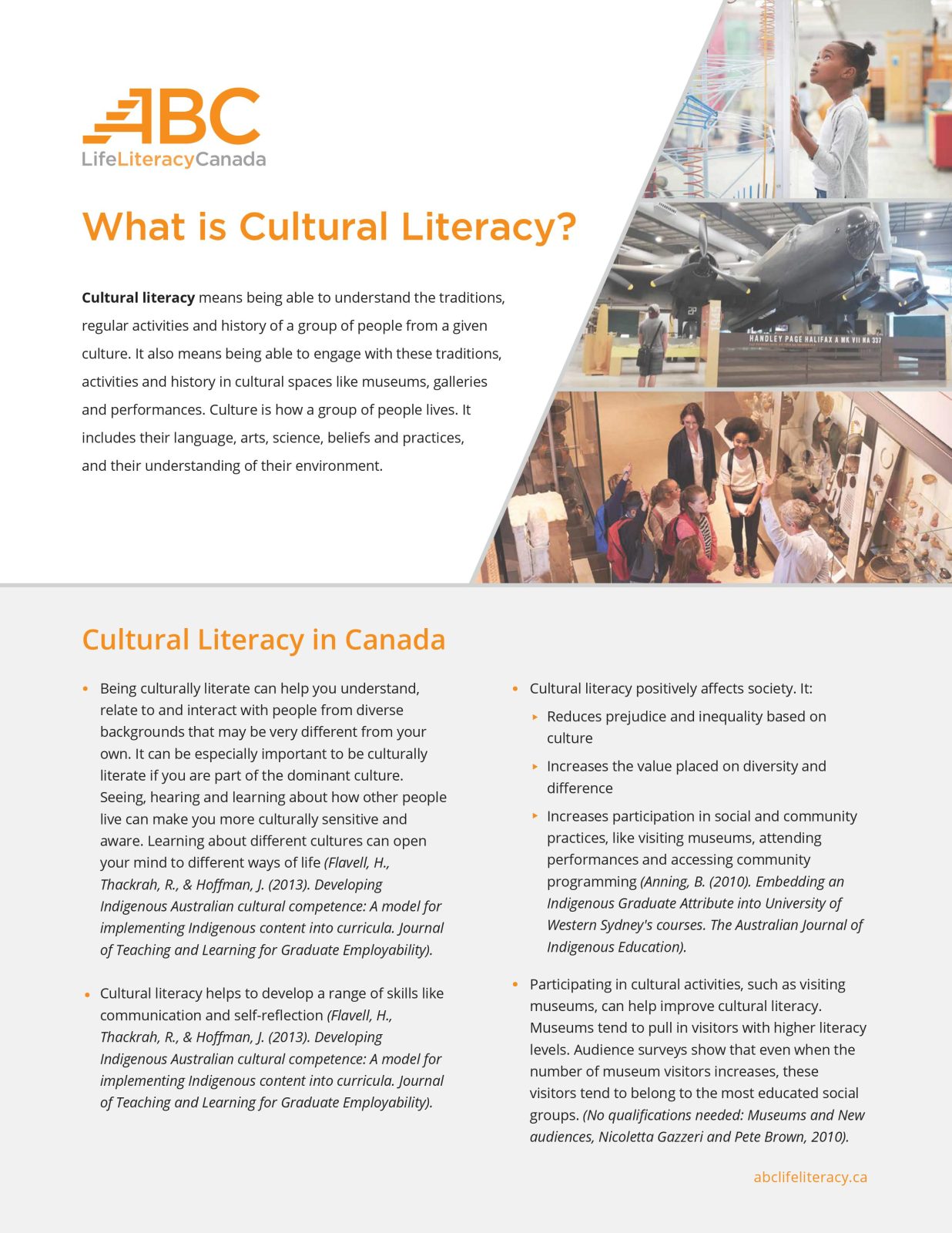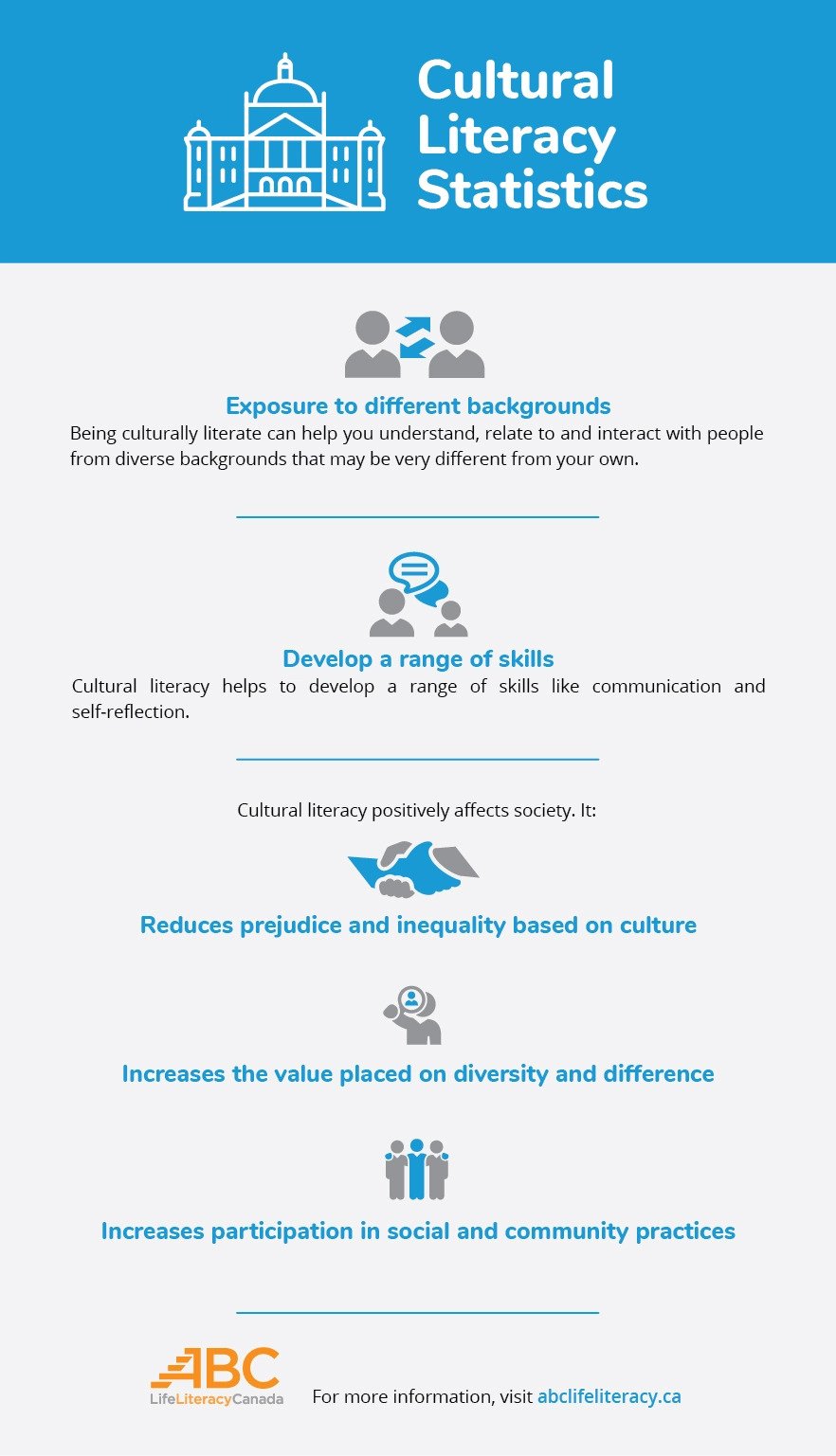
What is Cultural Literacy?
Cultural literacy means being able to understand the traditions, regular activities and history of a group of people from a given culture. It also means being able to engage with these traditions, activities and history in cultural spaces like museums, galleries and performances. Culture is how a group of people lives. It includes their language, arts, science, beliefs and practices, and their understanding of their environment.
Cultural Literacy in Canada
- Being culturally literate can help you understand, relate to and interact with people from diverse backgrounds that may be very different from your own. It can be especially important to be culturally literate if you are part of the dominant culture. Seeing, hearing and learning about how other people live can make you more culturally sensitive and aware. Learning about different cultures can open your mind to different ways of life (Flavell, H., Thackrah, R., & Hoffman, J. (2013). Developing Indigenous Australian cultural competence: A model for implementing Indigenous content into curricula. Journal of Teaching and Learning for Graduate Employability).
- Cultural literacy helps to develop a range of skills like communication and self-reflection (Flavell, H., Thackrah, R., & Hoffman, J. (2013). Developing Indigenous Australian cultural competence: A model for implementing Indigenous content into curricula. Journal of Teaching and Learning for Graduate Employability).
- Cultural literacy positively affects society. It:
- Reduces prejudice and inequality based on culture
- Increases the value placed on diversity and difference
- Increases participation in social and community practices, like visiting museums, attending performances and accessing community programming (Anning, B. (2010). Embedding an Indigenous Graduate Attribute into University of Western Sydney’s courses. The Australian Journal of Indigenous Education).
- Participating in cultural activities, such as visiting museums, can help improve cultural literacy. Museums tend to pull in visitors with higher literacy levels. Audience surveys show that even when the number of museum visitors increases, these visitors tend to belong to the most educated social groups (No qualifications needed: Museums and New audiences, Nicoletta Gazzeri and Pete Brown, 2010).

